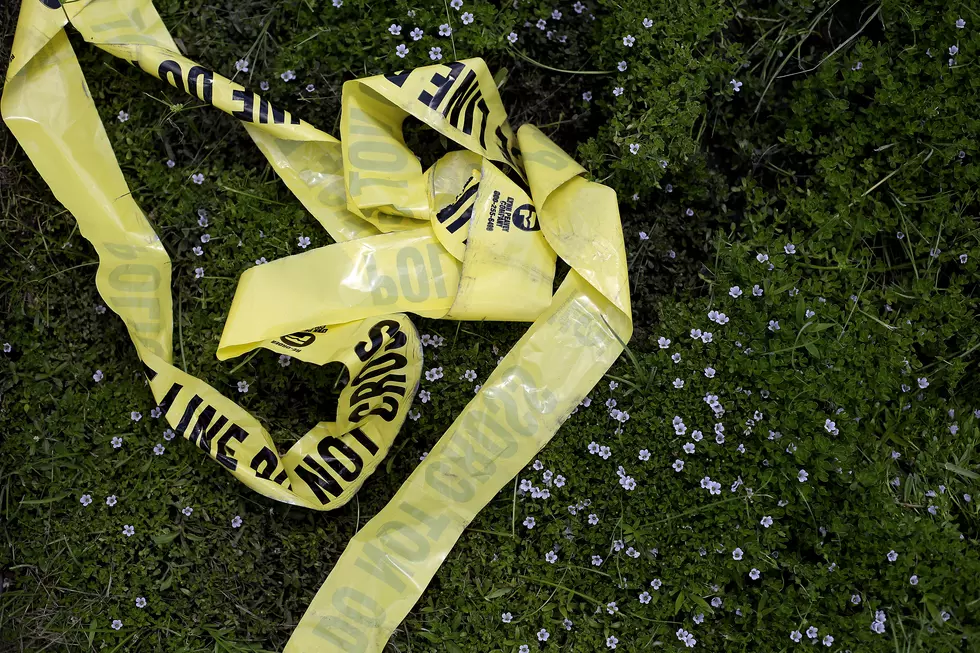
Redistricting Session, Battle Over Minority-Majority Districts Heat Up
The first week of the Louisiana Legislature's special redistricting session is almost completed, and lawmakers continue to debate nine proposals to redraw the state's Congressional district boundaries.
That debate is centered along both political and racial lines. Republicans are focusing on districts that at the very least maintain the status quo and at most shift districts farther south to account for shifts in the state's population. Democratic lawmakers are insisting on the addition of a second majority-minority district.
CONGRESSIONAL REDISTRICTING
The vast majority--13 out of 16--of the proposed U. S. House maps up for consideration have been submitted by Democrats. In fact, three of them alone have been submitted by Baton Rouge Senator Cleo Fields.
Fields's maps are similar in the respect that they each create a second minority-majority district by taking areas from the current Third and Fifth Districts, including parts of Lafayette, St. Martin, and St. Landry Parishes. The northern portion of Lafayette Parish would move into the new Fifth District in all three of the maps. The major difference between the three is where St. Martin Parish would be placed.
In one map, the majority of St. Martin Parish would be placed in the First Congressional District, currently represented by House Minority Whip Steve Scalese. A small portion of the parish north of Interstate 10 would be placed in the Fifth District, currently represented by Julia Letlow (R-Start), while more territory north of I-10 would move into the Second Congressional District, currently represented by Troy Carter (D-New Orleans). A sliver of Lafayette Parish would also be included in the LA-2 if this map is adopted.
In another, the western and extreme northern part of St. Martin Parish would be placed in LA-5. The rest of the parish would be placed in a newly-configured Sixth Congressional District, currently represented by Rep. Garret Graves (R-Baton Rouge). Northern Lafayette Parish would be placed in the new LA-5; the rest would remain in the Third Congressional District.
In the last, St. Martin Parish and a small sliver of Iberia Parish would move to the Second Congressional District. The Iberia Parish panhandle would be placed in LA-1, while the rest of the parish would remain in LA-3. Meanwhile, Baton Rouge would move into the new Fifth District.
LaPlace Representative Randal Gaines's proposal is identical to Fields's third map.
Baton Rouge Senator C. Denise Marcelle's proposal is similar to Field's third proposal. The difference between those plans where the boundary lines lie.
Lafayette Senator Gerald Boudreaux's proposal would also place northern Lafayette and St. Martin Parishes and all of St. Landry Parish in a newly-configured majority-minority Fifth Congressional District. A portion of Evangeline Parish would also be placed in the new LA-5. Under Boudreaux's plan, they would share a representative with the cities of Baton Rouge and Monroe. Meanwhile, the remainder of Lafayette and St. Martin Parishes would remain in the Third Congressional District, while the remainder of Evangeline Parish would remain in the Fourth District.
New Orleans Senator Candace Newell's proposal mirrors Boudreaux's with one major exception: The Iberia Parish panhandle and all of St. Mary Parish would be placed in LA-1
Baton Rouge Representative Barbara Carpenter's proposal also mirror's Boudreaux's map, except hers extends the district boundary farther south to the St. Martin/Iberia Parish Line.
New Orleans Senator Karen Carter Peterson's proposal is similar to Boudreaux's, except hers leaves more of St. Martin and Lafayette Parishes out of LA-5 and in LA-3.
The remaining Democratic proposals feature boundaries that are more radical. Norco Senator Gary Smith, Jr., introduced a map that would split Lafayette into three districts. The western portion would remain in LA-3. The northwestern area would fall into LA-2. The northeastern portion of the parish would move to LA-5.
Alexandria Senator Jay Luneau's proposal creates a snake-like District 5 that stretches from Shreveport to Monroe down to St. Landry Parish and eastward into the Florida Parishes. Luneau's map splits Lafayette between the Second and Third Districts and St. Landry between the Third and Fifth Districts. It also places St. Martin Parish wholly in the Second District.
Monroe Representative Pat Moore proposed the same map in the House.
The last Democratic proposal comes from New Orleans Senator Joseph Bouie. His map would put current Fourth District Rep. Mike Johnson and current Fifth District Rep. Julia Letlow, both Republicans in the same district, the newly-configured LA-4. LA-5 would stretch from Shreveport to the south and east into St. Landry parish, the Baton Rouge area, and the Florida Parishes. Like Luneau's plan, Bouie's map splits Lafayette Parish into three different districts.
The three Republican proposals largely maintain the Louisiana congressional district boundaries as they are now. The biggest difference between the current congressional map and the proposals put forth by House Speaker Clay Schexnayder, Senate President Page Cortez, and Senator Sharon Hewitt is that the new proposals all put St. Landry Parish in a single district, LA-5. Right now, St. Landry is split into three different districts. The proposals themselves differ very little from each other.
Here is Schexnayder's proposal.
This is Cortez's proposal.
This is Hewitt's proposal.
STATE LEGISLATURE BOUNDARIES
So far, only one lawmaker has proposed new boundaries for the state's 105 House districts. New Orleans Representative Royce Duplessis's plan would change some district boundaries to create more minority-majority districts. Most of Acadiana's districts will see minor boundary adjustments--if any. The biggest change in Acadiana would come in the 39th and 46th districts. Duplessis's plan expands the 39th District eastward into St. Martin Parish, taking some territory from the 46th District to create a minority-majority district.
Only two legislators have offered proposals to redraw the lines for the Senate's 39 districts. Just as has happened with the battle over the congressional districts, the battle over the legislature's upper chamber boils down to race and population shifts.
Sen. Cortez's proposal shifts districts to account for population gains. Most notably, District 37, which right now is a North Louisiana district, would be moved to the Northshore. District 17, which is center around Port Allen, would shift westward to take in areas of St. Landry Parish east of Opelousas and as far south as the Lafayette and St. Martin Parish lines.
The other proposal shift's districts to account for the one-third of Louisiana's population that now identifies as Black. Senator Ed Price (D-Gonzalez) shrinks some districts and expands others to not only account for population shifts, but also to give Black-majority areas one-third representation in the Senate.
WORKING OUT OF PUBLIC VIEW?
Lawmakers were slow to release their proposals publicly. In fact, the first bills to be filed for the special session were posted to the legislature's website early Monday morning, just hours before the special session began. This gave Louisiana residents very little time to view the proposals before discussions began in committee meetings.
Based on comments caught on record by reporters at the Capitol, some lawmakers hoped the public would either miss or ignore the redistricting session.
WHAT'S NEXT
The House and the Senate have until Sunday, February 20 to complete its redistricting work.
Governor John Bel Edwards may exercise his veto power over any redistricting plan of which he disapproves. In fact, Edwards has suggested that he would veto any plan that did not create a second minority-majority district.
If Gov. Edwards signs a bill that keeps the status quo, civil rights groups could sue. The ACLU and the NAACP have signaled that they would file federal lawsuits to force the legislature to redraw its state and federal election maps if they didn't reflect the state's racial makeup. In fact, the NAACP has already sued one state's legislature and won. The organization challenged Alabama's congressional maps, saying they did not give the state's Black voters an opportunity to elect candidates of their choice. A three-judge panel agreed, saying Alabama's new maps violated the Voting Rights Act.
The two of the three judges who ruled in favor of the NAACP were appointed to the bench by President Donald Trump.
The Seven Modern Wonders of Acadiana
Lafayette: 1981 vs. 2021
Things to See and Do in New Iberia
Lafayette TV Icons: Where Are They Now?
Tumbleweavesnh of Acadiana
More From News Talk 96.5 KPEL









